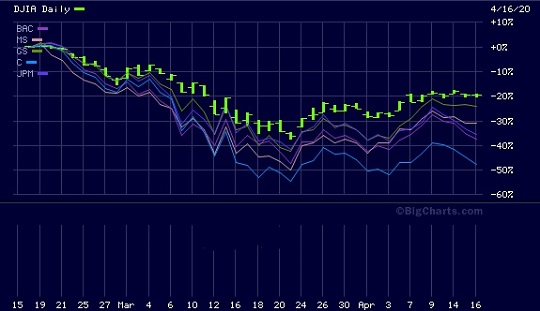Investing in stocks has long been recognized as a powerful way to build wealth and secure financial independence. One strategy that can greatly enhance your investment returns is focusing on stocks with dividends under $20.
Dividends are a distribution of a company’s earnings to its shareholders, and they play a crucial role in generating passive income and growing your portfolio over time.
In this article, we will explore the power of dividends and how they contribute to building wealth through stock investments. We will also delve into the concept of dividend yield and its significance when considering stocks under $20.
Additionally, we will provide valuable insights on identifying quality stocks within this price range, uncovering hidden gems that often go unnoticed by investors. Lastly, we will discuss important strategies for mitigating risks and offer guidance for beginners looking to build a portfolio using stocks under $20.
The Power of Dividends: Building Wealth with Stocks
Dividends are essential for long-term investing success. When a company generates profits, it can distribute earnings as dividends to shareholders. Investing in stocks with dividends under $20 provides regular cash flow and potential for capital appreciation.
Dividends not only offer immediate income but also contribute to compounding returns over time. By reinvesting dividend payments into more shares, investors can harness the power of compounding and accelerate wealth accumulation.
Dividend investing provides stability and security in volatile markets, as companies that pay dividends tend to be financially sound. Careful evaluation of dividend yield, payout ratio, and historical growth is important when selecting stocks.
Understanding Dividend Yield: Making Informed Investment Decisions
Dividend yield is a crucial metric to consider when evaluating stocks with dividends under $20. It is calculated by dividing the annual dividend payment by the stock price and expressing it as a percentage. This metric provides valuable insights into how much a company pays out in dividends relative to its stock price.
A high dividend yield indicates that the company distributes a significant portion of its earnings as dividends compared to the stock price. This feature can be particularly appealing for income-focused investors, as it suggests a higher return on investment.
To illustrate this concept, let’s say we have a stock with a dividend yield of 5% and a stock price of $20. This means that the company pays out $1 in dividends per share annually. By understanding and analyzing dividend yield, investors can make more informed decisions about which stocks align with their financial goals.
By considering dividend yield, investors can identify companies that offer attractive opportunities for generating consistent income through dividends. However, it’s important to note that a high dividend yield alone should not be the sole factor in making investment decisions.
It should be evaluated alongside other fundamental factors such as the company’s financial health, growth prospects, and industry trends.
Investors should also be aware that companies with exceptionally high dividend yields may indicate potential risks or challenges within the business. It could imply that the market has concerns about future growth or sustainability of those dividends.
In summary, understanding dividend yield allows investors to assess how much income they can potentially generate from their investments relative to the stock price. By considering this metric along with other key factors, investors can make more informed investment decisions tailored to their financial objectives and risk tolerance levels.
Identifying Quality Stocks with Dividends under $20: Key Factors to Consider
When investing in stocks with dividends under $20, thorough research is essential. Consider the company’s financials, including revenue growth, profitability, and debt levels. Look for stable earnings and strong balance sheets.
Also, assess the stability of dividend payments over time – companies with consistent increases or maintenance demonstrate financial discipline. Additionally, evaluate the growth potential within industries or sectors, focusing on companies with a competitive advantage.
Utilize reputable financial websites and reports, as well as professional analysts’ opinions for reliable information. By conducting comprehensive research, you can identify quality stocks with dividends under $20 that have long-term success potential.
| Key Factors | Description |
|---|---|
| Financials | Analyze company financial performance such as revenue growth, profitability, and debt levels. Seek companies with stable earnings and strong balance sheets. |
| Dividend Stability | Consider the consistency of dividend payments over time – companies that consistently increase or maintain their dividends demonstrate financial discipline. |
| Growth Potential | Assess industry or sector growth potential and focus on companies with a competitive advantage or unique market positioning for long-term success. |
| Research Sources | Utilize reputable financial websites, reports, and professional analysts’ opinions for reliable information to support investment decisions. |
Remember to conduct thorough research considering these key factors when identifying quality stocks with dividends under $20.
Hidden Gems: Lesser-Known Stocks with Dividends under $20
In the world of investing, hidden gems can often be found among lesser-known stocks with dividends under $20. These companies may offer attractive returns but often go unnoticed by many investors. By conducting thorough research and analysis, you can uncover undervalued stocks with significant growth potential.
Success stories of individuals who have achieved remarkable investment returns through these hidden gems serve as inspiration for those willing to venture beyond the mainstream. While investing in lesser-known stocks carries some risk, careful evaluation of fundamentals can help mitigate this risk.
So explore the realm of hidden gems and discover the opportunities waiting to be found in stocks with dividends under $20.
Mitigating Risks: Diversification and Portfolio Management Strategies
Diversification and portfolio management strategies are crucial elements in mitigating risks when it comes to investing in stocks. Regardless of the stock price or dividend yield, there are inherent risks associated with investing. However, by implementing effective strategies, you can minimize these risks and maximize your returns.
One fundamental principle in portfolio management is diversification. This strategy involves spreading your investments across different asset classes, industries, and geographic regions. By doing so, you reduce the impact of any single investment’s performance on your overall portfolio.
Diversification helps protect against market volatility and potential losses by ensuring that you have a mix of investments that are not dependent on each other.
Regularly reviewing and rebalancing your portfolio is also essential for mitigating risks. This process ensures that your investment choices remain aligned with your objectives and risk tolerance. It allows you to adjust your holdings as needed to maintain a balanced allocation and potentially take advantage of new opportunities.
Maintaining a long-term perspective is key when implementing diversification and portfolio management strategies. It’s important to avoid making impulsive decisions based on short-term market fluctuations. Instead, focus on the bigger picture and stay committed to your investment goals over time.
In summary, diversification through investing in various asset classes, industries, and geographic regions can help mitigate risks associated with stock investments. Regularly reviewing and rebalancing your portfolio ensures it remains aligned with your objectives.
Remember to maintain a long-term perspective and avoid being swayed by short-term market fluctuations. By implementing these strategies, you can protect yourself against potential losses while maximizing the potential for returns on your investments.
Building a Portfolio with Stocks under $20
Investing in stocks under $20 is a great way for beginners or those with limited capital to start building their portfolio. Here are some tips to help you get started:
-
Implement dollar-cost averaging: Invest a fixed amount regularly, regardless of market conditions. This strategy allows you to buy more shares when prices are low and fewer shares when prices are high.
-
Consider exchange-traded funds (ETFs): ETFs track specific indexes or sectors and offer diversification by holding multiple stocks within a single investment product.
-
Thoroughly research potential investments: Use online resources, financial news outlets, and reputable investment books to expand your knowledge before committing your money.
By following these tips, you can begin your investment journey with confidence and potentially achieve your financial goals.
Tools and Resources for Investors: Navigating the Stock Market Landscape
Navigating the stock market can be overwhelming, but there are tools and resources to help. Reputable financial websites like Yahoo Finance, Bloomberg, and CNBC provide real-time stock quotes and analysis. Mobile apps such as Robinhood, TD Ameritrade, and E*TRADE offer user-friendly interfaces for trading stocks on the go.
Established brokerage firms like Fidelity Investments and Charles Schwab provide research tools and personalized advice. By utilizing these resources, investors can gain insights into stocks with dividends under $20 and make informed decisions based on accurate information. Diversification is key to managing risk within a portfolio.
By spreading investments across different asset classes, investors can reduce exposure to any single stock or industry. With diligence and informed decision-making, investing in stocks with dividends under $20 offers exciting prospects for generating passive income and achieving long-term financial goals.
[lyte id=’SowCuHVESwI’]






